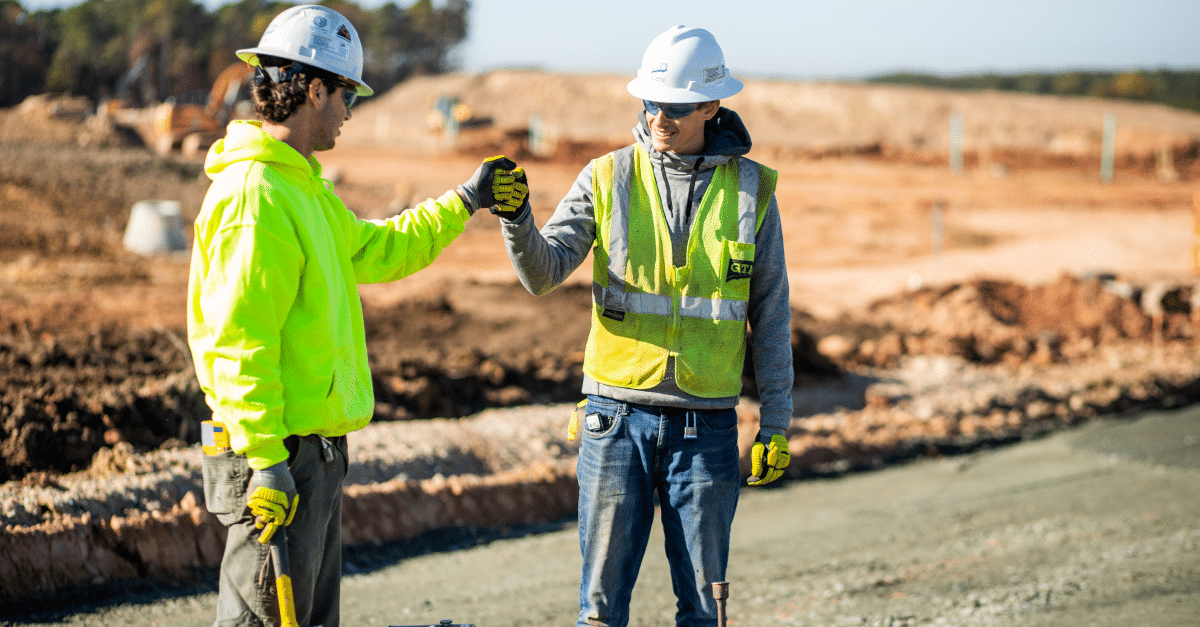What Does Geotechnical Engineering For Construction Projects Do?
What Does Geotechnical Engineering For Construction Projects Do?
Blog Article
Facts About Geotechnical Engineering For Construction Projects Uncovered
Table of ContentsSome Known Details About Geotechnical Engineering For Construction Projects Not known Details About Geotechnical Engineering For Construction Projects 9 Easy Facts About Geotechnical Engineering For Construction Projects ShownThe Definitive Guide for Geotechnical Engineering For Construction ProjectsThe Buzz on Geotechnical Engineering For Construction ProjectsThe smart Trick of Geotechnical Engineering For Construction Projects That Nobody is Discussing
The duty of geotechnical design dramatically deals with realizing the functions of soil and rock, which may differ considerably by their density, dampness web content etc. These features should be taken a look at by geotechnical engineers to forecast their movements under various scenarios. The safety and security along with stability of structures are influenced by soil problems, making this evaluation necessary., in addition to just how they interact with buildings that have been erected on or within them, is one of the key explanations for why geotechnical engineering is crucial.
In enhancement to structural planning and construction, geotechnical design is also essential to the repair and upkeep of pre-existing frameworks. Age-related destruction or additional problems could affect a structure's security and efficiency. Environmental management is completed through geotechnical engineering. Knowledge in air, water, and dirt top quality upkeep is placed to use by geotechnical engineers to decrease the unfavorable impacts of jobs.
Facilities development, offshore design, tunnel building and construction, and deep structures. Risk-based layout and multidisciplinary groups. These parts will maintain the field evolving and guarantee its ongoing significance in the years to come. To sum up, geotechnical design is a crucial discipline that preserves the durability and integrity of civil infrastructure. Geotechnical engineers add to making building projects effective all over the world by understanding the behavior of planet materials and applying proper planning methods.
The Buzz on Geotechnical Engineering For Construction Projects
The foundational stability of any task is critical. Geotechnical engineering plays an essential role in guaranteeing that frameworks are improved strong ground, essentially and figuratively. By examining soil, rock, and subsurface conditions, geotechnical designers supply crucial insights that help in the layout, building, and upkeep of structures and infrastructure.

Getting The Geotechnical Engineering For Construction Projects To Work
Lab screening: Identifying the buildings of soil and rock. Numerous prominent construction tasks have actually efficiently utilized geotechnical engineering to ensure their security and security.

As a leader in geotechnical engineering, BECC Inc. is dedicated to providing cutting-edge and reliable remedies that fulfill the highest standards of quality and safety. To find out more on exactly how BECC Inc. can support your next construction project, call us today and allow us help you improve solid ground.
William Rankine, a designer and physicist, created an alternate to Coulomb's planet stress concept. Albert Atterberg created the clay uniformity indices that are still utilized today for dirt category. In 1885, Osborne Reynolds acknowledged that shearing causes volumetric expansion of thick products and tightening of loose granular products. Modern geotechnical design is claimed to have begun in 1925 with the magazine of Erdbaumechanik by Karl von Terzaghi, a mechanical engineer and geologist.
Geotechnical Engineering For Construction Projects Fundamentals Explained
Terzaghi likewise created the structure for theories visit the site of bearing capability of foundations, and the theory for forecast of the price of negotiation of clay layers as a result of loan consolidation. Later on, Maurice Biot completely established the three-dimensional dirt debt consolidation concept, expanding the one-dimensional design previously developed by Terzaghi to extra general hypotheses and presenting the set of basic equations of Poroelasticity.
Geotechnical designers investigate and figure out the homes of subsurface conditions and products. They also develop corresponding earthworks and maintaining frameworks, passages, and framework foundations, and may oversee and evaluate websites, which may further include site surveillance along with the risk evaluation and reduction of all-natural dangers - Geotechnical Engineering for Construction Projects. Geotechnical engineers and engineering rock hounds perform geotechnical investigations to get information on the physical buildings of dirt and rock underlying and beside a site to make earthworks and structures for proposed structures and for the repair work of distress to earthworks and frameworks triggered by subsurface problems.
Geotechnical Engineering For Construction Projects - Questions
Still, they are in some cases used to enable a rock hound or engineer to be reduced right into the borehole for straight aesthetic and hands-on assessment of the dirt and rock stratigraphy. Different soil samplers exist to satisfy the needs of various engineering jobs. The typical infiltration test, which makes use of a thick-walled split spoon sampler, is the most common means to accumulate disturbed samples.

Commonly, the user interface's specific geometry is unknown, and a simplified user interface geometry is thought. Limited inclines need three-dimensional designs to be analyzed, so most inclines are assessed assuming that they are considerably wide and can be stood for by two-dimensional Check Out Your URL versions.
8 Simple Techniques For Geotechnical Engineering For Construction Projects
Developing the style based on a functioning hypothesis of habits expected under the most probable conditions. Option of quantities to be observed as construction profits and computing their anticipated worths based on the working hypothesis under the most undesirable conditions.
Dimension of amounts and analysis of real problems. It is improper for projects whose layout can not be altered throughout building and construction.
Report this page